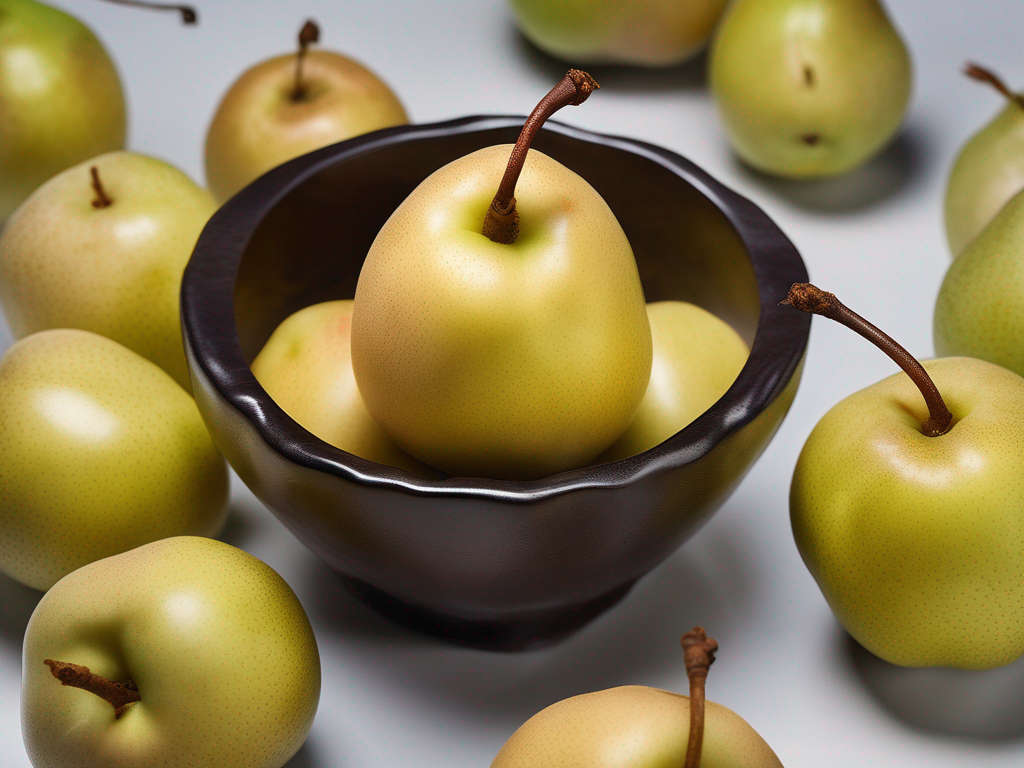
Maximizing Food Safety: When to Discard Overripe Asian Pears
Get Your Free Food Safety Cheat Sheet
30 most common foods with instant answers. Print it and stick it on your fridge—completely free!
Maximizing Food Safety: When to Discard Overripe Asian Pears
Asian pears, also known as Nashi pears or apple pears, are a delicious and nutritious fruit with a unique flavor and texture. However, like all fruits, Asian pears have a limited shelf life, and it's essential to know when to discard them to avoid the risk of food poisoning. In this blog post, we will delve into the signs of overripe Asian pears, the potential food safety risks associated with consuming them, and practical tips for proper storage to maximize their freshness. (Asian pear)
Understanding Overripe Asian Pears
Asian pears are typically ripe when they are firm but slightly yielding to the touch. However, as they continue to ripen, they become softer and juicier, eventually reaching an overripe state. Here are some signs that indicate an Asian pear is overripe and should be discarded:
Visual Signs:
- Wrinkled Skin: Overripe Asian pears may develop wrinkles or soft spots on their skin.
- Dark Spots: The appearance of dark or moldy spots is a clear indicator of spoilage.
- Discoloration: If the skin color has significantly darkened or changed, it's best to avoid consuming the fruit.
Texture and Smell:
- Mushy Texture: Overripe Asian pears tend to become mushy and lose their crisp texture.
- Fermented Smell: If the pear emits a strong, fermented odor, it is likely past its prime and should be discarded.
Food Safety Risks of Consuming Overripe Asian Pears
Consuming overripe Asian pears can pose several food safety risks due to bacterial growth and spoilage. Here are some potential hazards associated with eating overripe Asian pears:
Bacterial Contamination:
- Increased Bacteria: Overripe fruits provide an ideal environment for bacteria to thrive, increasing the risk of foodborne illnesses.
- Listeria and Salmonella: These harmful bacteria can contaminate overripe Asian pears, leading to symptoms like nausea, diarrhea, and fever.
Mold Growth:
- Mold Toxins: Overripe fruits are susceptible to mold growth, which can produce toxins harmful to human health.
- Allergic Reactions: Mold toxins on overripe Asian pears can trigger allergic reactions in sensitive individuals.
Proper Storage Tips for Asian Pears
To extend the shelf life of Asian pears and prevent them from becoming overripe, follow these practical storage tips:
Refrigeration:
- Store in the Fridge: Place Asian pears in the refrigerator to slow down the ripening process and maintain their freshness.
- Optimal Temperature: Keep the fridge temperature between 32-40°F (0-4°C) for ideal storage conditions.
Ripening:
- Room Temperature: If Asian pears are not yet ripe, leave them at room temperature to ripen naturally.
- Check Daily: Monitor the ripening progress and refrigerate once they reach the desired ripeness to prevent overripening.
Proper Handling:
- Avoid Bruising: Handle Asian pears gently to prevent bruising, which can accelerate the ripening process.
- Separate from Ethylene: Keep Asian pears away from ethylene-producing fruits like bananas and apples to avoid premature ripening.
Conclusion
Knowing when to discard overripe Asian pears is crucial for maintaining food safety and enjoying their flavor at its best. By recognizing the signs of spoilage, understanding the associated risks, and implementing proper storage practices, you can ensure that your Asian pears stay fresh and safe to consume. Remember to inspect your fruits regularly, store them correctly, and prioritize food safety to savor the delightful taste of Asian pears without any concerns.
For more information on Asian pears and other food safety tips, visit [Asian Pear](/food/asian pear). Stay informed, stay safe, and enjoy your fruits responsibly! (Asian pear)
Related Posts
Here are some other articles you might find helpful:
Authoritative Food Safety References
These agencies and university labs inform every tip and health precaution we publish.
USDA FoodKeeper – Cold Storage Guidelines
Official refrigerator, freezer, and pantry timelines maintained by the U.S. Department of Agriculture.
Visit USDA FoodKeeperFDA Produce Safety Rule & Grower Guidance
Field-to-fridge handling practices that prevent contamination of fruits, vegetables, and leafy greens.
Visit FDA Produce SafetyCDC Foodborne Illness Prevention Hub
Surveillance-backed guidance on pathogens, symptoms, and steps to reduce foodborne illness risk.
Visit CDC Food SafetyUC Davis Postharvest Technology Center
University research detailing optimal storage atmospheres for produce after harvest.
Visit UC Davis PostharvestPenn State Extension – Home Food Preservation & Safety
Peer-reviewed extension bulletins on safe canning, chilling, and reheating practices.
Visit Penn State ExtensionGet Your Free Food Safety Cheat Sheet
30 most common foods with instant answers. Print it and stick it on your fridge—completely free! Want more? Upgrade to the complete guide with 70+ foods.
Scan your food directly and get instant safety info using our AI-powered camera feature.